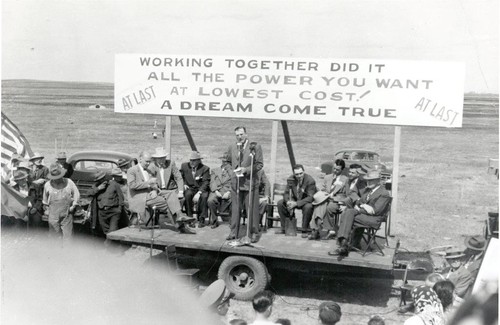
May 20, 2016 is the 80th anniversary of the Rural Electrification Act of 1936. The REA was created to bring electricity to farms. In 1936, nearly 90 percent of farms lacked electric power because the costs to get electricity to rural areas were prohibitive.
REA funding and the hard work of Rural Electric Cooperatives transformed agriculture and life in rural America into productivity and prosperity. Thanks to hard work and REA loans, by 1950 close to 80 percent of U.S. farms had electric service. Since then, generations have heard the stories about “the night the lights came on,” a significant date for farm families.

Today’s rural electric cooperatives provide electricity to over 5.5 million rural customers. Since 2009, USDA has invested over $34 billion in nearly 1,000 rural electric projects to deliver affordable, reliable electricity to rural areas. Today’s projects strengthen rural electric systems and fund renewable energy and smart grid technologies.
In 1981, the preface in Rural Lines—USA, a publication of USDA’s REA noted, “Looking at the record of accomplishment, we might think the years ahead will be easier. They won’t be. The systems we have built will still need pioneers. Today we need men and women who can find new ways to tell their stories to members; who can plan systems to carry many times the present loads; who can chart a sensible and secure financial future. Rural Electrification will require new approaches, fresh ideas. In saluting those people who organized the systems, let us also salute the new pioneers, the planners, who will provide leadership in the years ahead.”
To see more, visit: On 80th Anniversary of Rural Electrification Act, USDA Invests More Than $200 Million in Electric Infrastructure Improvements in Five States.


